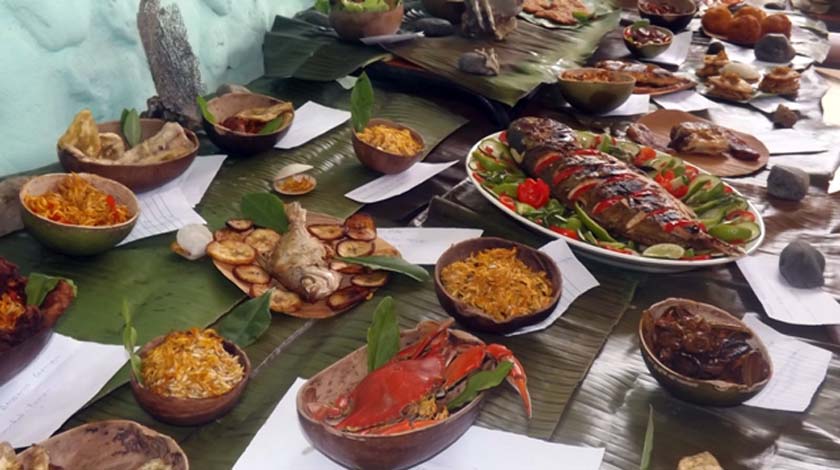 Baracoa, the first of the seven towns founded in Cuba by the Spanish colonizers, on August 15, 1511 by Diego Velazquez, is one of the most important culinary market in the country, with more than 200 food, sweets and local drinks recipes.
Baracoa, the first of the seven towns founded in Cuba by the Spanish colonizers, on August 15, 1511 by Diego Velazquez, is one of the most important culinary market in the country, with more than 200 food, sweets and local drinks recipes.
The typical food is based on the same products that its first inhabitants grew: taro, cassava, corn, pepper, sweet potato, among others, later enriched with the cultural influence of African slaves, mixed with that of the European conquerors.
Banana, coconut and cocoa are a must in an infinite variety of foods and drinks, which can be found on the daily meal of any Baracoa house of these times.
The Baracoa cuisine also includes exquisite sweets with a distinctive seal in them provided by the coconut milk, which in seafood, fish and vegetables, constitutes a delicacy for very demanding tastes.
You just have to boil the white mass of the fruit, squeeze it on a clean cloth until getting the juice or milk; then season it with salt and spices of all kinds, add chili and let it concentrate on the fire, then it will be ready to combine with all those dishes and delight the most demanding palate.
The inexhaustible pastry and the highly original presentation of many foods and sweets wrapped in leaves are equally traditional.
Numerous recipes from the Baracoa cuisine have transcended territorial borders, creating must-see symbols such as the famous coconut cone, or the bacan or chorote (thick chocolate that is a habit and a letter of introduction in these lands).
Among the typical foods of Baracoa, it is worth mentioning the tetíen salsa (fry caught at the mouths of the rivers on the Baracoa coast), the palmitocompuesto (heart of the royal palm), the calalú, rice with crab, coconut milk with fish, crab or banana balls, ajiaco criollo (spicy potato dish), spiked pork, enchilado de cangrejo (crab stew), stuffed crab, casabe (cassava bread), buñuelo (fritter), pork fricassee, chicharrones (pork skin), chilindrón (tomato and pepper sauce).
Among sweets we can mention the tulanga (made from cassava), the coconut nougat, the sweet potato, corn or cassava bread, the frangollo (made with banana), and the raspadura (made from the cashew, almond and tamarind seed); and the cucurucho (local icon of superior delicacy if it is made with honey from bees), while among the drinks are the atoles of banana, corn, sweet potato or cassava. (Yamilka Alvarez Tamos, ACN)



Nos reservamos el derecho de no publicar los comentario que incumplan con las normas de este sitio